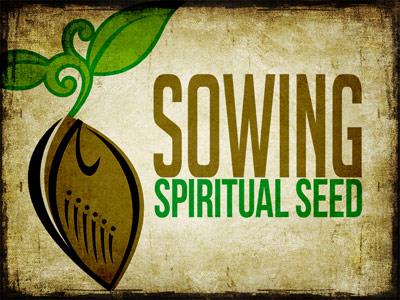-
The Purpose Of The Parables Series
Contributed by Allan Quak on May 15, 2023 (message contributor)
Summary: Jesus uses parables to either reveal callous hearts where the word is being taken away, or reveal receptive hearts which have an increasing harvest.
Message
Matthew 13:10-17
“The Purpose of the Parables”
Today we are starting a series of sermons which will look at the Parables of Jesus.
“Parable” is the English translation of a Greek word which literally means “to place alongside”. From this literal meaning we get the idea that a parable is a common story from life which has, placed alongside it, a spiritual truth.
Not every part of the parable is teaching a spiritual truth … the food fed to the pigs by the rebellious lost son is – just food … there is nothing cryptic about it. So when we are reading parables we are not looking for all sorts of hidden messages – rather the teaching of the parables are clear and focussed.
There are approximately 40 parables of Jesus. Jesus’ parables are only found in Matthew Mark and Luke … John’s Gospel has no parables. Mark has six parables … five of them are also in Matthew and Luke … only one parable is unique to Mark. This means that most of the parables are in either Matthew or Luke.
In all of the Gospels the first full scale parable is the parable of the sower and the seed. It can also be called the parable of the soil, or the parable of the four different hearers. Initially, when Jesus starts using this style of teaching, the disciples are a little confused.
Matthew 13:10
The disciples came to him and asked, “Why do you speak to the people in parables?”
In answering the question Jesus teaches the disciples the purpose behind teaching in parables. We find that teaching in Matthew 13:10-17
Have you ever gone to the doctor because you have something wrong with you. When the doctor tells you what is wrong … sometimes all you hear is big words … big words … big words.
You have “spheno palatine ganglio neuralgia”
So what is wrong with me?
You ate ice-cream too fast and have a brain freeze.
The disciples ask Jesus … “Why do you speak in parables?”.
When Jesus gave the answer the disciples would have completely understood what Jesus was saying – we will see why in a moment.
But even after we have read the answer we still might be thinking … “So Jesus, why do you speak in parables?”
In seeking to understand the purpose of the parables let’s have a closer look at what the disciples have seen that we, perhaps, are still needing to learn.
An important aspect of this is to recognise that the disciples have seen that Jesus has had a very confronting day.
That same day Jesus went out of the house and sat by the lake.
Matthew 13:1
What else happened on “that same day”?
Turn back to chapter Matthew 12:15, “Jesus withdrew from that place.” Here we can be sure that we are in a different day to what took place in previous verses.
On this day (Matthew 12:22-24)
22 They brought to Jesus a demon-possessed man who was blind and mute, and Jesus healed him, so that he could both talk and see. 23 All the people were astonished and said, “Could this be the Son of David?” 24 But when the Pharisees heard this, they said, “It is only by Beelzebul, the prince of demons, that this fellow drives out demons.”
This is a day when there is a huge confrontation between Jesus and the Pharisees.
The Pharisees accuse Jesus of being demon-possessed.
Jesus shows how illogical it is for Satan to drive out Satan.
Jesus accuses the Pharisees of blasphemy of the Holy Spirit – the unforgivable sin.
Jesus calls the Pharisees a “brood of vipers”.
Back in Matthew 12:14 we read that “The Pharisees went out and plotted how they might kill Jesus.” I’m sure the events of this day have only served to make the Pharisees even more determined in their endeavours.
The day continues when “some of the Pharisees and teachers of the law said to him, ‘Teacher, we want to see a sign from you.’” (Matthew 12:38). Jesus doesn’t give any sign and basically tells the Pharisees they are on the road to being full of evil spirits.
The day further continues , “While Jesus was still talking to the crowd, his mother and brothers stood outside, wanting to speak to him” (Matthew 12:46). Jesus responds by saying that his disciples are his family. That is when Jesus leaves the house goes down to the lake.
What a day!
It is a day when the confrontation between Jesus and the Pharisees is solidified … and a day when commitment to discipleship is defined as being even more important than the commitment to family.
It is on that day that Jesus tells the first recorded parable—the parable about seed and soil. This parable is one of the easier parables to understand because Jesus almost immediately provides an explanation.

 Sermon Central
Sermon Central



